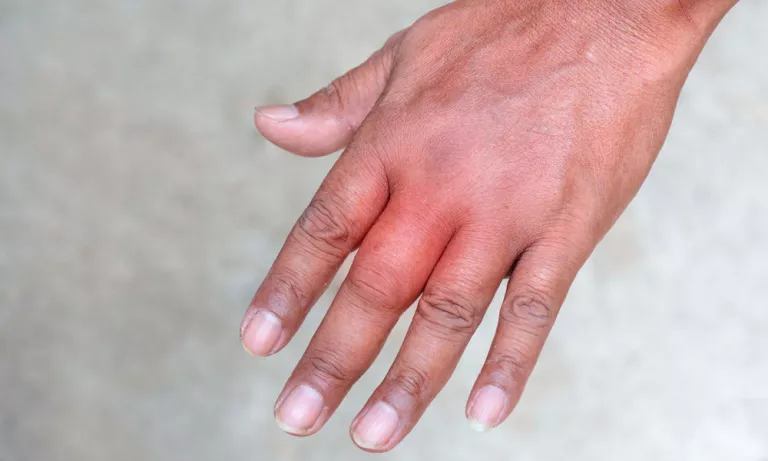
Madhuram Paliwal / Shutterstock.com
A few days after coming to the throne, King Charles III of England was upset while signing some documents, an activity that in principle should not have caused him any problems and that many blamed his bad temper at the time. However, the cameras showed that the monarch’s fingers were swollen and red, a sign that he suffers from dactylitis, which is also known as sausage finger. This condition is characterized by inflammation of the tendons and joints of the fingers and toes and whose discomfort could be responsible for his anger.
Inflammation is a response of the immune system against infections, or other types of diseases or injuries. “Dactylitis, or sausage finger, is considered one of the differential clinical features of spondyloarthropathies and especially of psoriatic arthritis,” explains Dr. Juan Carlos Torre Alonso in an article published by the Spanish Society of Rheumatology. And he adds that it can also appear in patients with gout, sarcoidosis or tuberculosis, among other diseases.

Symptoms and causes of dactylitis
The symptoms of dactylitis differ depending on its causes and to determine its origin, the patient’s medical history is used to find out under what circumstances the swelling appeared, if it is accompanied by other symptoms, and if it has been previously diagnosed with an autoimmune disease or inflammatory, or some kind of infection. Tests such as X-rays or blood tests may also be done.
Dactylitis can be classified into different types depending on its causes:
The main diseases that are associated with the appearance of dactylitis or sausage fingers are:
-
spondyloarthritis. Includes types of arthritis that affect joints and entheses (areas where tendons and ligaments attach to bone). Dactylitis affects about one third of patients with spondyloarthritis and can be a sign of advanced psoriatic arthritis.
-
infections. Some infections cause the tissue under the skin to swell, which can cause dactylitis symptoms. For example, Streptococcus or Staphylococcus skin infections can manifest with a form of dactylitis known as bullous distal dactylitis and is more common in children.
-
Sickle cell anemia. This type of anemia is characterized by changes in hemoglobin that can change the shape of blood cells. Hemoglobin is responsible for transporting oxygen throughout the body, so these changes in hemoglobin can influence the body’s ability to get enough oxygen. Lack of oxygen to the tissues causes sudden, severe pain, and dactylitis can be the first symptom of sickle cell disease, especially in children. In the event that dactylitis is a side effect of the disease, the patient may also have fever, pain, and an increase in white blood cells.
-
Sarcoidosis. This disease affects different organs, but especially the lungs, and only in exceptional cases affects the bones and muscles of the hands, causing painful swelling.
-
Tuberculosis. Although it is very rare, tuberculosis can cause inflammation in the bones of the hands and feet, altering their shape and causing pain.
-
Syphilis. Although it is a sexually transmitted disease, an infected pregnant woman can pass it on to her baby (congenital syphilis), who could be born with dactylitis on the fingers and toes.

How is sausage finger treated?
The treatment of dactylitis is aimed at combating its causes and pain relievers or non-steroidal anti-inflammatory drugs (NSAIDs) such as ibuprofen are usually prescribed. Physiotherapy can also give good results in the early stages. Sometimes it is also necessary to resort to corticosteroids, which are usually administered by intralesional injection.
In general, the prognosis is good and the inflammation and pain disappear when the disease that causes them is treated, although they can return if the therapy loses effectiveness. Patients with psoriatic arthritis, for example, may experience numerous bouts of dactylitis as the disease progresses.
.